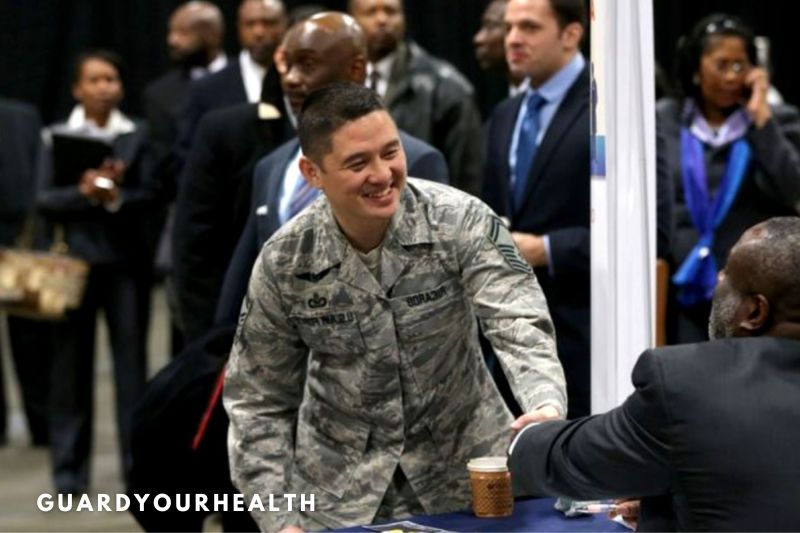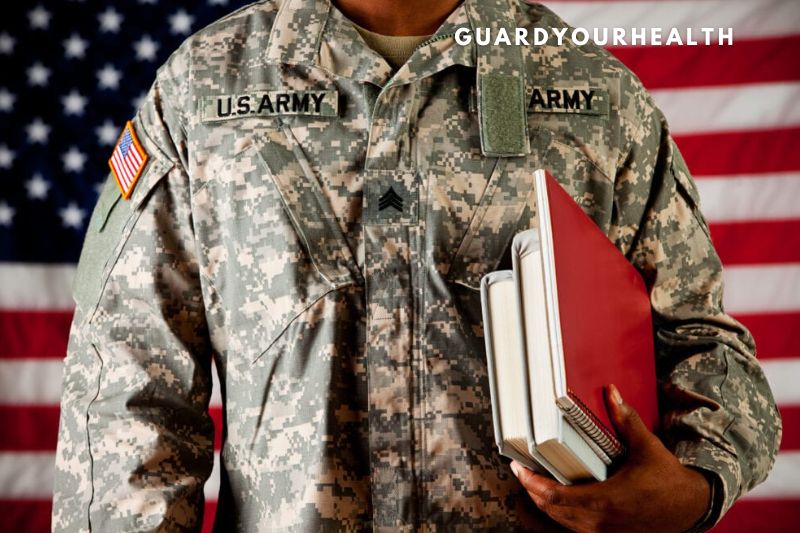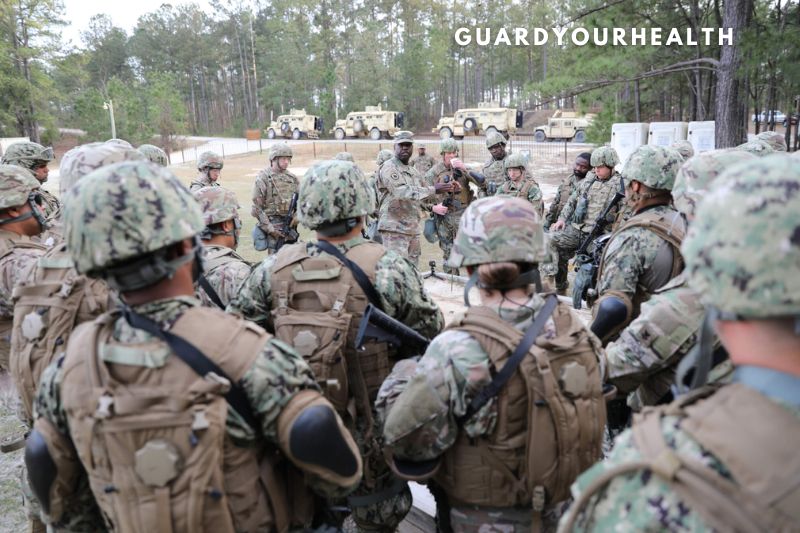In 2022, the definition of a military veteran will change. This should be a lucrative option for anyone looking to get into the online business world. Digital coaching can be done virtually anywhere, with the potential to work on your own time. There are several types of digital coaching services, but here are some top tips to get you started.
What is a U.S. Veteran?
The first stage in assessing eligibility for VA benefits is determining if the individual matches the VA’s definition of “veteran.”
While this may seem to be a straightforward issue, several intricacies exist. The Veterans Administration defines a veteran as “a person who participated in the active military, naval, or air duty and was dismissed or released under terms other than dishonorable.”
For VA purposes, active military, naval, or air duty includes service in the United States Army, Navy, Marine Corps, Air Force, and Coast Guard, and also service in the Reserves, Air or Army National Guard, or military colleges under certain instances.
Military service also includes full-time Public Health Service commissioned officers, full-time National Oceanic and Atmospheric Administration or Environmental Science Services Administration commissioned officers and service by certain civilians whose work supported military operations and the armed forces during specific periods of conflict or war.
If you served in the military, navy, or air force, the next step is to ascertain if it was “active” duty. Active duty service entails full-time commitment.
Reserves and National Guard members must have been called up to active service for federal reasons. Federal duty covers times when a member of the National Guard is ordered into federal service by the President or is required to participate in specific training exercises.
Sometimes, a Reservist or National Guard member may be deemed on active duty for training. Active military, naval, or air service is considered if “the person involved was handicapped or died from a sickness or injury received or worsened in line of duty” during the term of active duty for training.
There are also circumstances in which a person qualifies as a veteran, meaning while on “inactive duty for training,” such as if they were disabled or died as a result of an injury sustained or aggravated in the line of duty or an acute myocardial infarction, cardiac arrest, or cerebrovascular accident suffered while training.
It is worth noting that the term “illness” is not included in these service standards, implying that a person qualifies as a veteran for inactive duty for training under a more limited set of conditions.
- Read more: Active Duty Vs Reserve
Definition Of Military Veteran
The Type of Service
In general, there are two forms of service: full-time and part-time. Your job description determines this.
Full-timers are members of the Armed Forces, which comprise the Army, Navy, Marine Corps, Air Force, Coast Guard, and Space Force, while part-timers are members of the National Guard and Reserves.
This is significant since not every member of the National Guard and Reserves meets the following criteria to be labeled a veteran:
Deployed according to government directives is required to put a person on active duty. The deployment must meet the basic standards for active-duty military personnel.
She was discharged from service due to a disability related to any mandated training. For a legitimate handicapped status, the impairment must also have been documented to the VA.
Nonetheless, if you have served in the National Guard or Reserve for 20 years or more, you are eligible for veteran status.
The Duration of Service
If you have served on active duty for 30 consecutive days before being discharged for a disability in the line of duty, 90 days on or after September 10, 2001, before being released honorably, or two years before being dismissed under honorable terms, you are eligible for veteran status.
You are entitled to certain military benefits when are you considered a veteran of the military? Particularly if you have met the following:
For the 90 days, you can use the Post 9/11 GI Bill 2-year period and take advantage of the Montgomery GI Bill.
The Time of Service
The service period here refers to whether a person served during peacetime or warfare. For the former, you must have been on active duty for at least 180 days unless you experienced a service-related disability and were honorably discharged.
On the other hand, for the latter, you must have served on active duty for at least 90 days. You are only exempt if you have been disabled as a result of your service or if you got the Purple Heart and were released honorably.
The last exception is if you died as a result of your service. This implies that you will be deemed a veteran regardless of whether you served during peacetime or wartime.
The Type of Veteran
Even though we have previously referred to “veterans” as a single category, there are many distinct categories of veterans.
Knowing what sort of veteran you are will be essential since it will influence your eligibility for various benefits after you return to civilian life.
1. War Veteran
War veterans are active-duty or reserve military troops who have served in a war zone or nearby waterways to assist operations against a national enemy.
2. Combat Veteran
Combat veterans are active-duty or reserve military soldiers who have experienced any level of combat in a foreign environment due to an offensive, defensive, or friendly-fire action with a national adversary.
3. Retired Veteran
Any military person who has served in an active-duty or reserve role for at least twenty years is considered a retired veteran. Members who are medically retired due to injuries received while serving are also considered retired veterans, regardless of their service length.
4. Protected Veteran
Protected veterans are “safeguarded” from discrimination under 38 U.S. Code – 4212. A protected veteran falls into one of four categories: handicapped, recently separated veteran, campaign badge veteran, or service medal veteran.
Disabled Veteran
A disabled veteran, as the term suggests, is any military person who has been hurt during combat or peacetime while serving and permanently injured.
Recently Separated Veteran
A recently separated veteran is any military member who has been relieved or dismissed from active service within the past three years.
Campaign Badge Veteran
An active duty wartime veteran is another term for this. A campaign badge veteran is any military person who served during a time of war or a campaign or expedition when the DoD or Department of Defense awarded a campaign badge.
Armed Forces Service Medal Veteran
An Armed Forces Service Medal Veteran is any military veteran awarded an Armed Forces Service Medal while on active duty. The medal is recorded on the DD214 form.
Who is a Veteran?
There are many people who have served in the armed forces who can be considered veterans. Some veterans have served in active duty, while others have served in the reserves. Veterans may have served in wartime or peacetime.
To know more details, you can access this blog to read: https://lawforveterans.org/who-is-a-veteran
National Guard – Are National Guard Veterans?
The primary distinction between the National Guard and the Reserves is that the federal government manages the Reserves, while individual states mostly manage the National Guard forces.
Those who wonder why National Guard personnel are not considered veterans should know they are! National Guard members who have served for more than 20 years are considered veterans, even if they are not deployed. Before 2016, individuals have only deemed veterans if they had served 180 days or more in a government position, such as active duty.
The Army National Guard and the Air National Guard are the two forms of National Guard. National Guard troops, like Reserves, complete basic training, and military job school full-time under ADT (active duty for training).
They return to civilian life but train one weekend per month (IDT) on top of 15 full-time training days each year. IDT/ADT time is not credited to veterans’ benefits.
If a state emergency occurs, state governors have the authority to summon National Guard personnel to active service. Such crises entail providing aid or protecting property and persons outside local law enforcement’s jurisdiction. This state service is formally called a “Title 38 Call-up,” and what qualifies you as a veteran.
Like the Reserves, the president and secretary of defense may call up the National Guard to provide military contingency operations known as “Title 10 Call-ups” or federal duty. This sort of duty counts toward the required service hours for veterans’ benefits.
An estimated 40,000 Air and Army National Guard members each month serve on federal assignments abroad.
Active Guard/Reserves
The Active Guard/Reserves (AGR) program comprises Reserves and National Guard troops serving full-time active duty. AGR troops offer daily operational assistance to ensure that National Guard and Reserve units are always ready to activate.
AGR duty is equivalent to full-time active-duty service in terms of veteran’s benefit service requirements.
Individual Ready Reserve
A military service contract must last at least eight years, and any time not spent on active duty or in the Guard/Reserves must be spent in the Individual Ready Reserves (IRR).
Generally, a member is moved to the IRR for the remaining four years after four years of service. IRR members do not participate in weekend exercises or yearly training, and they are not compensated. IRR personnel might be recalled to active service to assist military initiatives when required.
Unless the member is recalled into active service while on IRR, the period spent inactive does not contribute toward the veteran’s benefits.
Since 2004, over 15,000 IRR members have been recalled to active service, mostly for the Army and Marine Corps.
FAQ
What qualifies a person as a military veteran?
A “veteran” served in the active military, naval, or air service and was dismissed or released under terms other than dishonorable. (E) permitted travel to and from such duty or service.
Are you a veteran if you have never deployed?
“Anyone who has served for 20 years, even if they were never activated on an [federal] order for more than 180 days outside of training,” he stated. According to Krenz, the new legislation merely acknowledges those who serve.
Can active duty be a veteran
Are you considered a veteran if you failed boot camp?
If a recruit cannot finish training because of a failure to adjust to the environment, the member may be assigned permanent party status. This is technically known as entry-level separation from active duty service or entry-level separation from the United States military.
Is a marine reservist a veteran?
Conclusion
After reading this article, it is clear that there are many benefits to being a military veteran. Veterans have access to many resources and support systems to help them transition into civilian life. They also have unique skills and experiences that can benefit the workforce. Thank you for taking the time to read this article.
If you wanna know more useful information, you can access our website Guardyourhealth.com to explore more…

![Definition Of A Military Veteran 2022 [NEW] Top Full Guide Here!](https://www.guardyourhealth.com/wp-content/uploads/2022/07/Definition-Of-A-Military-Veteran-2022-NEW-Top-Full-Guide-Here.jpg)









